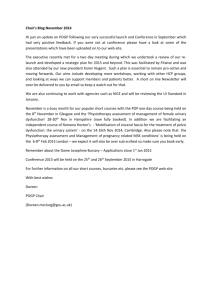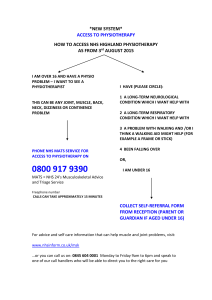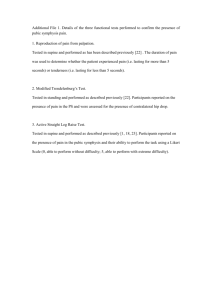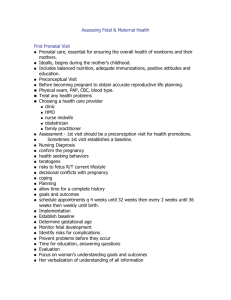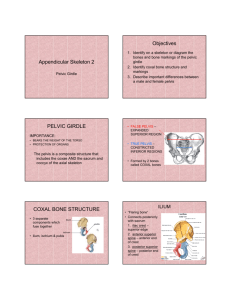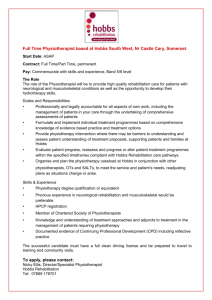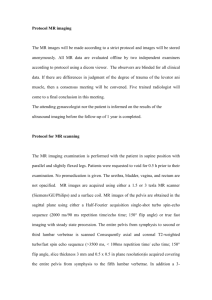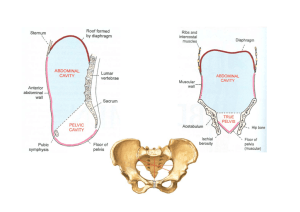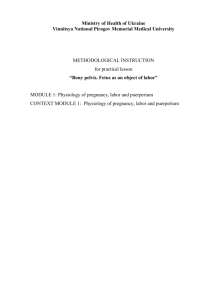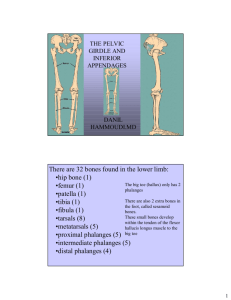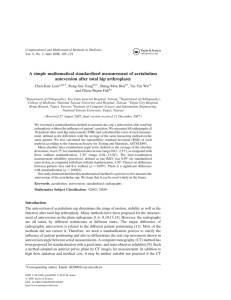Leaflet 10 Symphysis Pubis Dysfunction
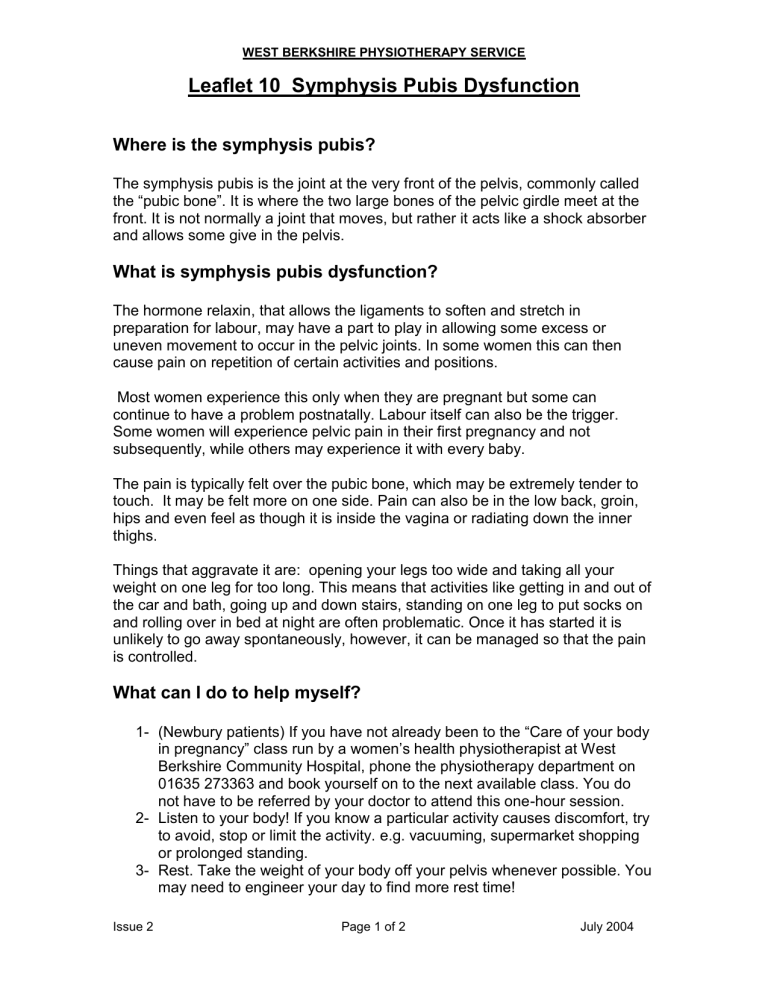
WEST BERKSHIRE PHYSIOTHERAPY SERVICE
Leaflet 10 Symphysis Pubis Dysfunction
Where is the symphysis pubis?
The symphysis pubis is the joint at the very front of the pelvis, commonly called the “pubic bone”. It is where the two large bones of the pelvic girdle meet at the front. It is not normally a joint that moves, but rather it acts like a shock absorber and allows some give in the pelvis.
What is symphysis pubis dysfunction?
The hormone relaxin, that allows the ligaments to soften and stretch in preparation for labour, may have a part to play in allowing some excess or uneven movement to occur in the pelvic joints. In some women this can then cause pain on repetition of certain activities and positions.
Most women experience this only when they are pregnant but some can continue to have a problem postnatally. Labour itself can also be the trigger.
Some women will experience pelvic pain in their first pregnancy and not subsequently, while others may experience it with every baby.
The pain is typically felt over the pubic bone, which may be extremely tender to touch. It may be felt more on one side. Pain can also be in the low back, groin, hips and even feel as though it is inside the vagina or radiating down the inner thighs.
Things that aggravate it are: opening your legs too wide and taking all your weight on one leg for too long. This means that activities like getting in and out of the car and bath, going up and down stairs, standing on one leg to put socks on and rolling over in bed at night are often problematic. Once it has started it is unlikely to go away spontaneously, however, it can be managed so that the pain is controlled.
What can I do to help myself?
1- (Newbury patients)
If you have not already been to the “Care of your body in pregnancy” class run by a women’s health physiotherapist at West
Berkshire Community Hospital, phone the physiotherapy department on
01635 273363 and book yourself on to the next available class. You do not have to be referred by your doctor to attend this one-hour session.
2- Listen to your body! If you know a particular activity causes discomfort, try to avoid, stop or limit the activity. e.g. vacuuming, supermarket shopping or prolonged standing.
3- Rest. Take the weight of your body off your pelvis whenever possible. You may need to engineer your day to find more rest time!
Issue 2 Page 1 of 2 July 2004
WEST BERKSHIRE PHYSIOTHERAPY SERVICE
Leaflet 10 Symphysis Pubis Dysfunction
4- Sit down for tasks where you would normally stand. e.g. ironing or preparing food. Only do essential lifting. Try to get a toddler to climb up to you from a stool before you lift them. Organise yourself so that you are not repeatedly going up and down stairs, when you could get a few things in one go. Remember the heavier the weight you carry the more strain on the pelvis.
5- Be lady-like! Avoid straddle movements especially when weight bearing.
Keep your legs together getting in/out of the car or bed. If possible shower ra ther than bathe and don’t sit astride a bidet, sit on it like a toilet. When having sexual intercourse the safest position is on your side, face to face or like spoons with your back to your partner’s front. Horse riding is best avoided as is swimming the breaststroke.
6- Bend your knees and keep your legs “glued” together when turning in bed or getting in and out of bed.
7- Avoid twisting movements of the body- always face what you are doing.
8- If the pain is severe and the above measures are not helping enough your
GP will be able to refer you to physiotherapy. Various supports/corsets are available and using elbow crutches will help take the weight off the pelvis and keep you relatively mobile.
9- (Newbury patients)
Make an appointment to attend the “Coping with
La bour” classes at the physiotherapy dept (01635 273363) to get information about positions etc for delivery. The physiotherapist can also monitor your SPD whilst you are attending the classes.
Issue 2 Page 2 of 2 July 2004
